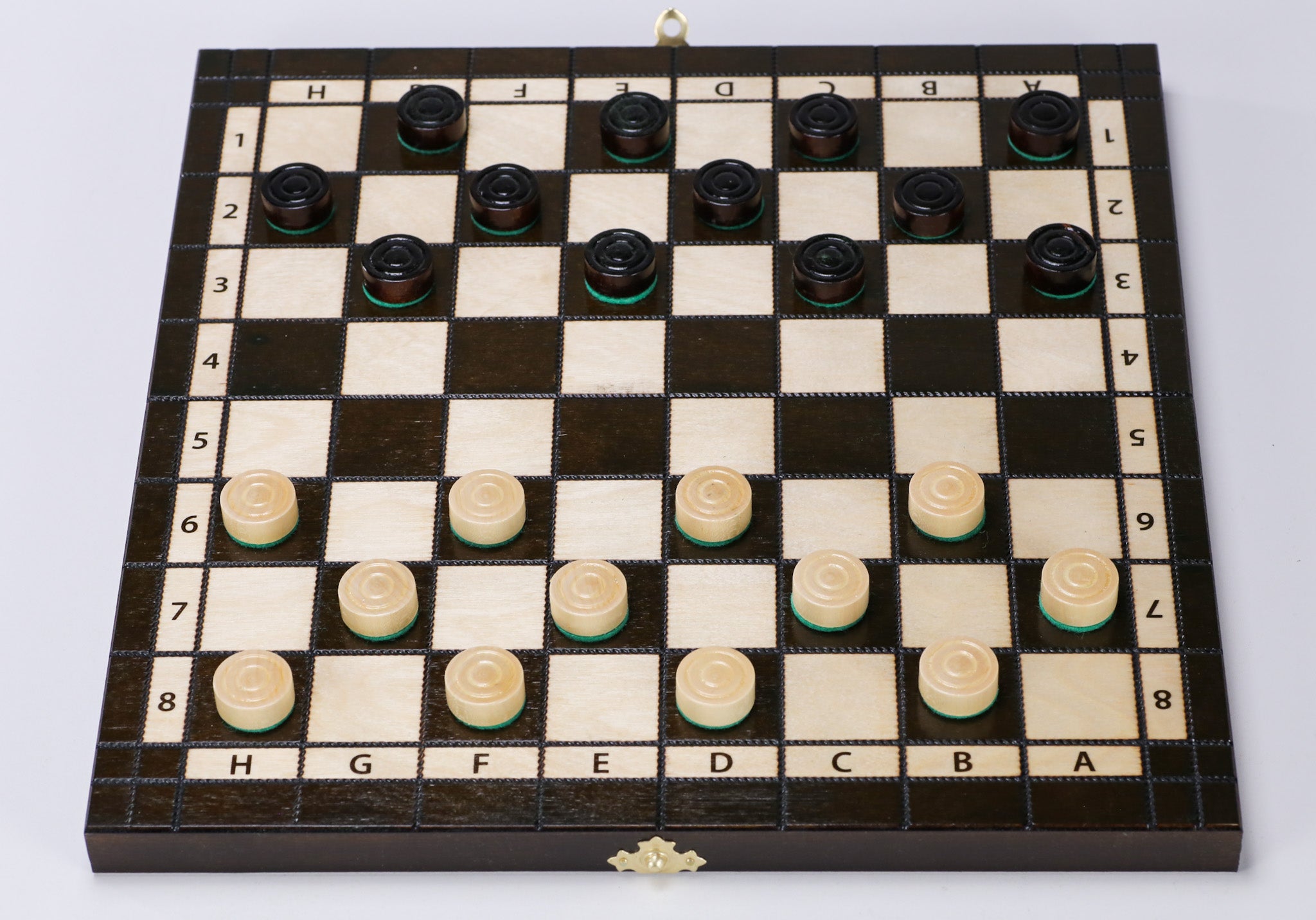Is Checker Same As Chess: Unraveling the Differences
Have you ever wondered if checkers and chess are just different names for the same game? At first glance, both might seem similar with their checkerboard patterns and strategic gameplay.
But, as you dive deeper, you’ll discover that these classic board games have unique rules, strategies, and histories that set them apart. Understanding these differences can not only improve your gameplay but also enhance your appreciation for each game. By the end of this article, you’ll have a clearer picture of what makes checkers and chess so distinct and fascinating.
So, let’s explore this intriguing comparison and uncover which game might be your perfect match!
Origins And History
When you hear the words “Checker” and “Chess,” you might picture two classic board games played with strategic moves and mental dexterity. But how exactly did these games come to be, and are their origins intertwined? Let’s delve into the intriguing history of these two beloved games.
Ancient Roots
Checker, known as Draughts in some regions, dates back to ancient times. Evidence suggests that a precursor to the game was played in ancient Egypt around 3000 B.C. They used a simpler board, but the essence of strategic movement was already in play.
Chess, on the other hand, has its roots in India during the 6th century. It was originally called “Chaturanga,” which means four divisions of the military. The game evolved from a military strategy simulation, reflecting the importance of planning and foresight.
These games have been shaped by their cultural contexts, offering players a mental escape while subtly teaching strategic thinking. Isn’t it fascinating how games can mirror the societies they originate from?
Evolution Over Centuries
Checker evolved over centuries, gaining popularity in Europe during the Middle Ages. The rules were refined, and the game spread across continents, becoming the modern version we know today.
Chess, too, underwent significant changes. The arrival of chess in Persia led to new rules and pieces. By the time it reached Europe, it had transformed into the intricate game celebrated globally.
Both games have grown, shaped by historical events and cultural exchanges. Their evolution is a testament to human creativity and the universal appeal of strategic challenges. What other forms of entertainment have evolved in such fascinating ways?
If you’ve ever played these games, you’ve likely felt the rush of outsmarting your opponent. Both Checker and Chess have captivated minds for centuries, proving that some pastimes are timeless. Which game do you prefer, and why?

Credit: www.chess.com
Game Board Design
Checker and chess are distinct games with unique rules and strategies. Both use square boards, but differ in piece movement and objectives. Checker pieces move diagonally, while chess involves various piece types and complex tactics.
The design of the game board is a crucial element in distinguishing checkers from chess. While both games are played on a square board, the arrangement and purpose of each square differ significantly. Understanding these differences can enhance your appreciation for each game and improve your strategy.Checkerboard Layout
The checkerboard is an 8×8 grid, featuring alternating dark and light squares. Only the dark squares are used in checkers, making the game unique. This layout creates a diagonal path for movement, requiring players to think about multi-directional strategies. Your pieces can only move diagonally, adding complexity. This design encourages you to think ahead, planning your moves to avoid getting cornered. Remember, you are not just moving pieces; you are navigating a maze of possibilities.Chessboard Structure
The chessboard, also an 8×8 grid, utilizes both dark and light squares. Every square is active, unlike checkers. This offers a wider range of movement and strategic possibilities, making chess a game of infinite complexity. Each piece moves differently, so understanding the board structure is vital. You must consider each square’s potential for attack or defense. This structure demands you to think critically about positioning and control. Both boards share similarities, yet they invite different styles of play. How do you adapt your strategy to each? The answer lies in understanding the board’s unique design and leveraging it to your advantage.Piece Types And Movements
Chess and checkers are different in piece types and movements. Chess involves knights and bishops, while checkers uses uniform pieces. Chess pieces have varied moves, but checkers pieces move diagonally and capture by jumping. Both games demand strategic thinking, yet their rules and objectives differ significantly.
Understanding the different types of pieces and their movements in checkers and chess can significantly enhance your game strategy. Whether you’re a seasoned player or just getting started, knowing the unique capabilities of each piece can make all the difference in your gameplay. Let’s dive into the specifics of these two classic board games and see how the pieces differ in their roles and movements.Checker Pieces
In checkers, the game revolves around simplicity and strategy. Each player starts with 12 pieces, all of which are initially “men.” These pieces move diagonally across the board, one square at a time. The primary goal is to capture your opponent’s pieces by jumping over them. Once a “man” reaches the opposite side of the board, it becomes a “king.” Kings can move both forwards and backwards, offering more flexibility and power. Checker pieces don’t have individual names or ranks, which makes the game easier to learn but still challenging to master.Chess Pieces
Chess, on the other hand, features a diverse set of pieces, each with distinct movements. You have 16 pieces per player, including pawns, rooks, knights, bishops, a queen, and a king. Pawns move forward one square but capture diagonally. They can transform into any other piece (except a king) upon reaching the opponent’s back row. Rooks move in straight lines, either horizontally or vertically, across the board. Knights have a unique L-shaped movement, jumping over other pieces. Bishops travel diagonally, while the queen combines the power of both rook and bishop, moving in any direction. The king moves one square in any direction, and protecting it is your ultimate goal. Chess pieces each have unique roles, demanding strategic planning and foresight. This complexity makes chess a game of deep strategy and endless possibilities. Do you think the simplicity of checkers or the complexity of chess makes for a more engaging game? Each has its own charm and challenges, offering a unique experience for players.
Credit: www.chesshouse.com
Objective And Strategy
When you think about board games, checkers and chess often come to mind. While they both involve strategic thinking, their objectives and strategies are distinctly different. Understanding these differences can transform your approach to each game, making them more enjoyable and engaging.
Checkers is straightforward. Your goal is to capture all of your opponent’s pieces or block them so they have no legal moves. You move diagonally across the board, capturing pieces by jumping over them. The strategy involves anticipating your opponent’s moves and positioning your pieces to control the board. This means being proactive rather than reactive. Have you ever played a game where you thought ahead and won? That’s the essence of checkers!
Winning In Checkers
Success in checkers often lies in your ability to think several moves ahead. Position your pieces in such a way that they can become kings. Kings can move backwards and forwards, giving you an advantage. Consider the balance between attacking and defending. Sometimes, sacrificing a piece can lead to a strategic win. Have you ever considered sacrificing a piece to gain a superior position?
Practice makes perfect. The more you play, the better you become at predicting your opponent’s moves and planning your own. Challenge yourself to anticipate not just the next move, but the next few moves. This helps you develop a deeper understanding of the game.
Victory In Chess
Chess is a world of complexity. The objective is to checkmate your opponent’s king. This requires a blend of tactics and strategy. Each piece has a unique way of moving, and mastering these movements is crucial. You must protect your king while attacking your opponent. Have you thought about the balance between offense and defense?
In chess, patience and foresight are key. Sometimes the best move is to wait and let your opponent make a mistake. Learn to recognize patterns and positions that can lead to a checkmate. Chess is about being three steps ahead, like a complicated dance where each move is calculated.
Chess and checkers may seem similar at first glance, but their goals and methods diverge significantly. By understanding these differences, you can refine your strategies and enjoy the richness each game offers. What strategies will you employ next time you play?
Rules And Regulations
Checker and chess differ in rules and gameplay. Chess involves strategic moves with different pieces, while checkers uses uniform pieces. Each game offers unique challenges and requires distinct strategies to win.
Understanding the rules and regulations of games can dramatically enhance your gaming experience. Whether you’re a beginner or a seasoned player, knowing the rules is crucial. Have you ever found yourself in a heated game of checkers or chess, only to realize you’re not quite sure how the pieces should move? Mastering these rules not only boosts your confidence but also adds to the thrill of the game.Checker Game Rules
Checkers is a straightforward game, but don’t let its simplicity fool you. This game demands strategic thinking. Each player starts with 12 pieces placed on the dark squares of a board. You move diagonally, hopping over your opponent’s pieces to capture them. But remember, the real excitement begins when you reach the opposite end of the board and your piece becomes a king. Kings can move backward, opening up new strategies for you to explore. Ever been stuck with a piece you couldn’t move? It’s essential to understand that if you can jump, you must jump. This rule keeps the game dynamic and ensures players are always on their toes.Chess Game Rules
Chess, on the other hand, is like a battlefield where each piece has its own unique set of moves. The game starts with each player having 16 pieces: a king, queen, rooks, knights, bishops, and pawns. Pawns advance one square but capture diagonally. Knights jump in an L-shape. Bishops glide diagonally across the board. Rooks march straight. The queen is the most versatile, moving any number of squares in any direction. The king, however, is the most precious piece. While it can move one square in any direction, losing the king means losing the game. Have you ever felt the pressure as your opponent’s queen closes in on your king? Protecting the king is vital, and it requires a balance between attacking and defending. Both checkers and chess offer unique challenges. Which game do you find more intriguing? Understanding their rules can be the key to unlocking your potential as a player. So, dive into the world of board games, and see where your strategies take you!
Credit: mychessets.com
Skill And Complexity
Checkers and chess both require skill and strategy. Yet, their complexities differ significantly. Understanding these differences can enhance your appreciation for each game. Chess is often seen as more complex. It involves more pieces and strategies. Checkers, while simpler, still demands a strategic mindset. Each game offers unique challenges and rewards.
Checkers Complexity
Checkers uses an 8×8 board with 12 pieces per side. The rules are simple and easy to learn. Players must move pieces diagonally. Capturing an opponent’s piece is a key strategy. Once a piece reaches the opponent’s side, it becomes a king. Kings can move both forward and backward. This increases strategic options. The game ends when a player cannot move. Despite its simplicity, checkers requires foresight and planning.
Chess Complexity
Chess is played on the same 8×8 board. Each player has 16 pieces. The pieces include pawns, knights, bishops, rooks, a queen, and a king. Each piece moves differently. This adds to the complexity. Chess players must think several moves ahead. Strategic depth is vast. Players must protect their king at all costs. The game requires understanding of openings, tactics, and endgames. Chess is a complex mix of strategy and skill.
Cultural And Global Impact
The cultural and global impact of Checkers and Chess is profound. Both games have influenced societies worldwide. They hold a special place in many cultures. Their simple rules and strategic depth attract players of all ages. But their influence goes beyond mere entertainment.
Checkers Popularity
Checkers is popular for its simplicity. It is played in many countries. Families often gather to enjoy a quick match. The game requires only basic equipment and space. This makes it accessible to everyone. Its popularity spans continents and generations.
In some cultures, Checkers is part of traditional gatherings. It serves as a social activity. People of different ages and backgrounds can play together. This inclusivity helps spread the game’s appeal. Its easy-to-learn nature invites newcomers to join.
Chess Influence
Chess has a profound influence on global culture. It is known for its complexity and strategy. Many countries celebrate Chess as a national pastime. It often symbolizes intelligence and skill. Chess tournaments draw international attention and participation.
The game has inspired many cultural references. Books, movies, and art often feature Chess. It is used as a metaphor for strategic thinking. Chess also has educational benefits. It enhances problem-solving and critical thinking skills. This makes it popular in schools worldwide.
Technological Advancements
In recent years, technology has transformed many aspects of life. Games like checkers and chess are no exception. These classic board games have seen a surge in digital innovations. New tools and platforms have emerged, enhancing the way we play and experience them. From online gaming platforms to advanced AI opponents, technology is reshaping the landscape of these traditional games.
Checkers In Technology
Checkers has embraced digital platforms with open arms. Online versions of the game allow players to compete globally. People can challenge opponents from different countries. Mobile apps bring checkers to fingertips anytime, anywhere. AI-powered checkers apps offer training sessions. Players can improve skills and strategies through interactive lessons. Virtual tournaments provide competitive environments for enthusiasts. This global connectivity enriches the checkers experience.
Chess In The Digital Age
Chess has experienced remarkable digital growth. Online chess platforms attract millions of users. Players can engage in matches with opponents worldwide. Advanced AI engines analyze games and suggest strategies. Chess apps offer lessons for players of all levels. Interactive tutorials make learning chess accessible and fun. Virtual chess tournaments create a vibrant community. Technology empowers players to explore chess deeper.
Frequently Asked Questions
Are Checkers And Chess The Same Game?
No, checkers and chess are different games. Checkers uses a simpler 8×8 board with only one type of piece. Chess is more complex, featuring various pieces with different movements. While both are strategy games, their rules and objectives differ significantly.
How Do Checkers Differ From Chess?
Checkers and chess differ mainly in complexity and gameplay. Checkers is simpler, using uniform pieces and straightforward rules. Chess involves diverse pieces, each with unique moves, and requires more strategic planning. The objectives and tactics in both games are also distinct from one another.
Which Is Older, Checkers Or Chess?
Checkers is older than chess. The game of checkers, or draughts, dates back to ancient Egypt around 3000 B. C. Chess, however, originated in India around the 6th century A. D. Both games have evolved over centuries, gaining popularity worldwide.
Is Chess More Popular Than Checkers?
Yes, chess is generally more popular than checkers. Chess has a rich history with international competitions and famous players. It is often associated with intellectual prowess. Checkers is popular too, but it tends to be regarded as a more casual game compared to chess.
Conclusion
Checker and chess may look similar, but they are different games. Each game has unique rules and strategies. Checker uses a simpler board and playing style. Chess requires more strategic thinking and skill. Both games offer fun and challenge. Choosing between them depends on personal preference.
Some players enjoy the simplicity of checkers. Others love chess for its depth and complexity. Both games can improve focus and problem-solving skills. Enjoy playing either game with family and friends. They provide entertainment and mental exercise. Explore and discover which game you prefer.
Happy gaming!







